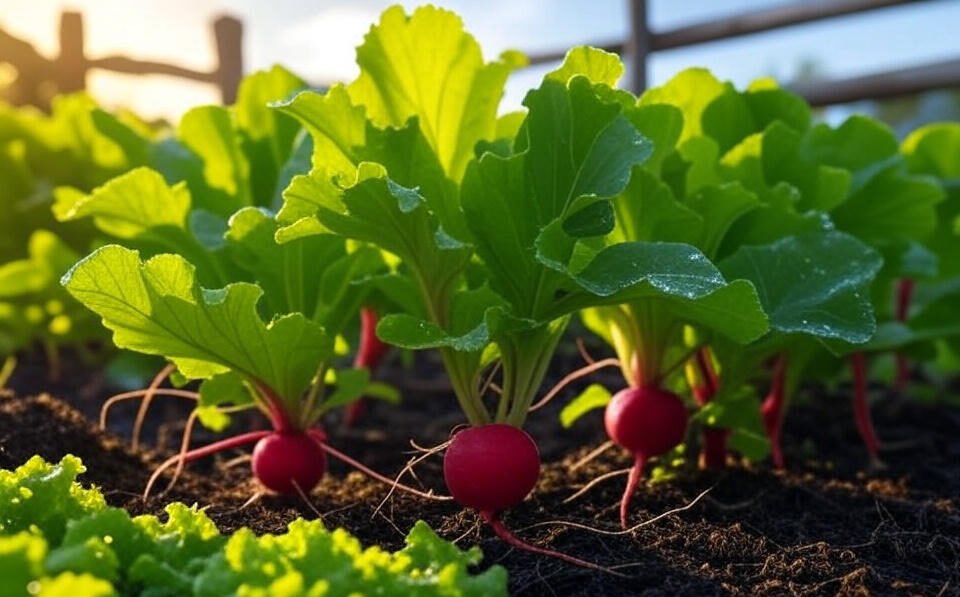Gardening offers a rewarding way to enjoy fresh produce, but waiting months for a harvest can test your patience. Fast-growing vegetables solve this problem by delivering results in just a few weeks. These crops suit beginners, small spaces, or anyone eager for quick rewards. We explores the best vegetables that grow quickly, offering practical tips to ensure success. You’ll discover how to plant, care for, and harvest these crops to enjoy fresh food sooner.
Why Choose Fast-Growing Vegetables?
Fast-growing vegetables provide quick results, making them ideal for gardeners who want to see progress without long waits. These crops thrive in various settings, from backyard plots to balcony pots. They fit short growing seasons and help you save on grocery bills. For new gardeners, quick harvests build confidence and reduce the chance of mistakes over long periods. Plus, these plants often need less maintenance, letting you focus on enjoying the process.
Benefits of Quick-Harvest Crops
Quick-harvest vegetables deliver fresh produce in weeks, cutting down on store-bought costs. They adapt well to small spaces, like containers or raised beds, making them perfect for urban gardeners. Many of these crops tolerate cooler weather, extending your growing season. They also encourage frequent planting, so you can grow multiple rounds in one year. This keeps your garden productive and your table stocked with fresh, homegrown food.
Saving Time and Effort
Choosing vegetables that mature fast saves you time and effort. You spend less time tending plants before reaping rewards. These crops often resist pests and diseases better due to their short growth cycle. This means fewer worries about losing your harvest. Quick-growing plants also let you experiment with different varieties, helping you find favorites without committing to months of care.
Top Fast-Growing Vegetables for Your Garden
Several vegetables stand out for their speed and ease of growth. Below, you’ll find detailed insights into the best options, including how to plant and care for each one. These crops range from crisp greens to hearty roots, ensuring variety for your meals.
Radishes: The Speedy Root
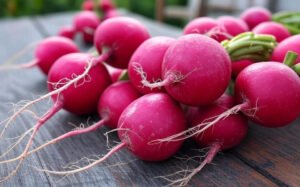
Radishes lead the pack as one of the fastest vegetables to grow, ready in just 21 to 30 days. Their small, round roots come in red, pink, or white varieties, adding color to salads. Plant radish seeds directly in loose, well-drained soil about half an inch deep. Space them two inches apart to avoid crowding. Water consistently to keep the soil moist but not soggy. Radishes prefer full sun but tolerate partial shade. Harvest when roots reach about one inch in diameter for the best flavor. Leaving them too long can make them woody.
Arugula: Peppery Greens in a Flash
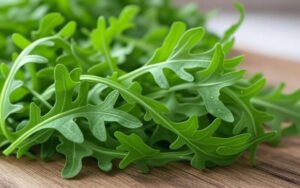
Arugula, with its spicy, nutty leaves, matures in 21 to 40 days. This leafy green thrives in cooler weather, making it a great choice for spring or fall. Sow seeds lightly on the soil surface and cover with a thin layer of dirt. Space plants about nine per square foot for healthy growth. Keep the soil damp to prevent wilting. Harvest outer leaves when they’re young for a tender bite. Arugula grows well in partial shade, especially in warmer climates to avoid bolting. Add it to salads or sandwiches for a bold flavor.
Lettuce: Crisp and Quick
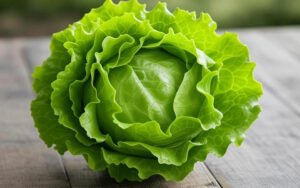
Lettuce, especially loose-leaf varieties, grows in 30 to 45 days. Its soft leaves make it a staple for fresh salads. Plant seeds in rows, about a quarter-inch deep, and thin seedlings to four inches apart. Lettuce loves cool temperatures and rich, well-drained soil. Water daily during dry spells to keep leaves crisp. Harvest by cutting outer leaves or the entire head. Grow it in spring or fall to avoid summer heat, which can make it bitter. Partial shade helps in warmer areas.
Spinach: Nutrient-Packed and Fast
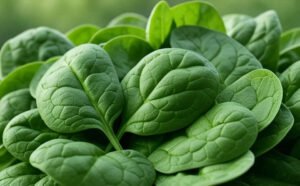
Spinach reaches harvest in 28 to 45 days, offering nutrient-rich leaves for salads or cooking. Sow seeds in cool soil, spacing plants six inches apart for good air flow. Keep the ground moist to support steady growth. Harvest outer leaves to encourage more to grow. Spinach tolerates light frost, making it ideal for early or late seasons. Its versatility shines in raw or cooked dishes, from smoothies to sautés. Plant in full sun or light shade for best results.
Kale: Hardy and Speedy Greens
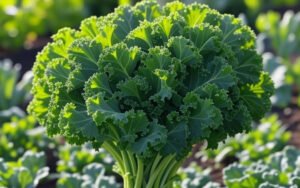
Kale produces baby leaves in 30 to 50 days, perfect for salads or smoothies. Plant seeds in full sun, spacing them to allow air circulation. Add compost to enrich the soil. Water regularly to keep leaves tender. Harvest young leaves for a milder taste, or let them grow larger for cooking. Kale withstands cold weather, even light frosts, making it a reliable choice. Its earthy flavor pairs well with soups or roasted dishes.
Mustard Greens: Zesty and Quick
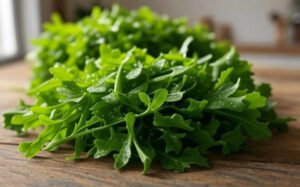
Mustard greens mature in 30 to 50 days, bringing a tangy kick to meals. Scatter seeds over garden beds and thin seedlings to four inches apart. Water consistently to avoid bitter leaves. Harvest small leaves for salads or larger ones for cooking. These greens tolerate heat better than other leafy crops, but they still prefer cooler seasons. Their bold flavor enhances stir-fries or sautés. Plant in full sun for the fastest growth.
Bok Choy: Crunchy and Versatile
Bok choy, a staple in Asian dishes, is ready in 45 to 60 days. Plant seeds in partial shade, spacing them eight inches apart to allow room for growth. Keep soil moist for crisp stalks. Harvest entire plants or just outer leaves for continuous production. Baby bok choy varieties grow even faster. Its crunchy texture and mild taste make it great for stir-fries or soups. Bok choy thrives in cooler weather but adapts to various conditions.
Peas: Sweet and Swift
Bush pea varieties yield sweet pods in 50 to 60 days. Soak seeds overnight before planting to speed germination. Plant them in rows with supports like trellises for climbing types. Space seeds about two inches apart. Water at the base to prevent mildew. Pick pods when they’re plump but not overfilled. Peas prefer cool weather, so plant them early in spring. Their sweet flavor shines fresh or lightly cooked in dishes like salads or stir-fries.
Beets: Roots and Greens in One
Beets mature in 50 to 60 days, offering both roots and edible greens. Sow seeds in deep, loose soil, thinning seedlings to three inches apart. Water regularly to help roots develop. Harvest when beets reach two inches in diameter for a tender texture. The greens add a nutritious boost to salads or sautés. Beets grow best in full sun and cooler seasons. Roast or boil the roots for a sweet, earthy addition to meals.
Green Beans: Bountiful and Quick
Bush green beans produce pods in 50 to 60 days. Plant seeds after the last frost, spacing them two inches apart in well-drained soil. Water at the soil level to keep foliage dry. Pick pods regularly to encourage more growth. Green beans need full sun for strong yields. Their crisp texture makes them perfect for steaming, canning, or eating fresh. Choose bush varieties for faster harvests compared to pole types.
How to Grow Fast-Growing Vegetables Successfully
Growing these vegetables takes simple steps for big results. Start with quality soil enriched with compost or organic matter. Test soil drainage by watering and checking for puddles. Most of these crops need at least six hours of sunlight daily. Water in the morning to let leaves dry before night, reducing disease risk. Check plants daily for pests like aphids or caterpillars. Remove them by hand or use natural sprays. Mulch around plants to lock in moisture and keep weeds away. For cold climates, start seeds indoors and move them outside after frost. Rotate crops yearly to prevent soil depletion. These habits ensure your garden thrives.
Timing and Season Tips
Timing matters for fast-growing vegetables. Most prefer cooler seasons like spring or fall. Radishes, lettuce, and spinach excel in early spring or late summer. Peas and kale handle light frosts, extending your growing window. For warmer areas, use partial shade to protect greens from bolting. Check your local frost dates to plan planting. Succession planting, where you sow seeds every two weeks, keeps your harvest steady. This approach maximizes your garden’s output.
Caring for Your Crops
Care involves consistent watering and monitoring. Keep soil moist but not waterlogged. Overwatering can rot roots, especially for radishes and beets. Fertilize lightly with compost or a balanced mix every few weeks. Prune damaged leaves to promote healthy growth. For leafy greens, harvest often to encourage new leaves. Watch for signs of stress, like yellowing or wilting, and adjust water or shade. These small efforts lead to better yields.
Conclusion
Fast-growing vegetables transform gardening into a quick, rewarding experience. From radishes ready in three weeks to green beans in two months, these crops deliver fresh food fast. They suit any space, from pots to plots, and work for all skill levels. Start with one or two varieties, follow simple care steps, and enjoy the fruits of your labor. Plant today to fill your table with homegrown goodness.






